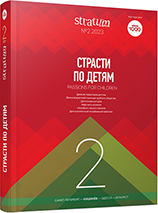Модифицированные черепа эпохи ранней и средней бронзы с территории Кавказа и Ближнего Востока
Modified Skulls of the Early Bronze — the Middle Bronze Ages Periods from the Territory of the Caucasus and Near East
Author(s): Dmitriy A. KirichenkoSubject(s): History, Archaeology, Ancient World, Prehistory
Published by: Издательский дом Stratum, Университет «Высшая антропологическая школа»
Keywords: Azerbaijan; Caucasus; Near East; artificial head (skull) deformation; craniometry; the Early Bronze Age; the Middle Bronze Age;
Summary/Abstract: The author focuses on generalization of finds of artificially deformed skulls from the area of South Caucasus and Near East as well as on characterization of types of head shaping spread among the population of the studied region and Eurasia. The finds of modified skulls of the Early - Middle Bronze Ages are not so numerous. Among archaeological sites, the following ones were identified as having the traces of head shaped skulls: Uzun Rama, Kudurlu (Azerbaijan); Yupsy cave, Abkhazia (Georgia); Velikent, Manas-Dagestan (Russian Federation); Karatash, Resuloglu, Hayaz Höyük (Turkey); Vounous (Cyprus); Shahri Sohta (Iran). On the territory of South Caucasus fronto-occipital type of artificial deformation combined with a mild low variant of circular head shaping type prevailed. The skulls from Uzun Rama, Velikent, Karatash (some exemplars), Resuloglu, Hayaz Höyük and Vounous show some similarity by the types of artificial modification. Probably, in case of Uzun Rama and Velikent we are dealing with the influence of traditions from the Near East, while in case of Yupsy cave, Manas, Kudurlu — the source of innovation was influenced by steppe tribes of the Catacomb culture. Population of Karatash, Resuloglu and Hayaz Höyük inherited the tradition of changing head form from Chalcolithic times. The same can be observed for Cyprus, where artificially deformed skulls existed in the Neolithic period. In case of Shahri Sohta it is difficult in present days to define how this custom and its followers transitioned in the South-East Iran during the Early Bronze.
Journal: Stratum plus. Археология и культурная антропология
- Issue Year: 2023
- Issue No: 2
- Page Range: 193-206
- Page Count: 14
- Language: Russian
- Content File-PDF

